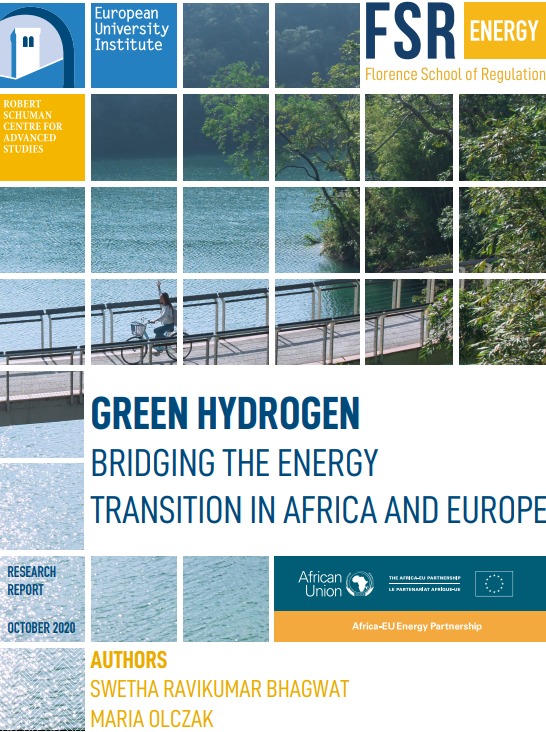Technical Report
Green Hydrogen: Bridging Energy Transition in Africa and Europe
October 2020
In 2015, the Paris Climate Agreement and the UN Sustainable Development Goals (SDGs) propelled the world into fast track mode towards achieving the sustainability goals. Three decades from now, the global energy landscape will look completely different to today. With the standard of living improving, there is a greater use of devices and services powered by a diversity of energy sources.
Superimposed on this diversity, there is a growing universal effort to achieve a rapid decarbonisation of the economy while making sure that no one is left behind, as is addressed in SDG 7.
Trying to achieve the decarbonisation goals on time means that, along with the energy sectors, the use of energy in end-use sectors (transport, buildings and industry) must be included. We need to widen the range of options being used, including attaining a fully networked system providing security of energy supply and system flexibility, and the active engagement of consumers, which goes beyond the current sector-specific approach. In this manner, an integrated approach is evolving with a ‘cross-sector nexus’ or ‘sector coupling.’ However, if the Paris Agreement objectives are to be met, countries need to raise their ambitions to ensure they are on track.
The launch of the European Green Deal is a step in that direction, with a focus not just on Europe but also on external cooperation with neighbouring regions. This presents new development opportunities for regions with high renewable energy potential, such as Africa. The production and trade of green hydrogen – a versatile energy vector – could become a significant opportunity for economic and social benefits for Africa to develop African society. It shows potential to assist with the post Covid-19 economic recovery in Africa in the short term and to enable both Africa and Europe to complete their respective clean energy transitions in the long term.
Authors
Swetha Ravi Kumar, Maria Olczak

